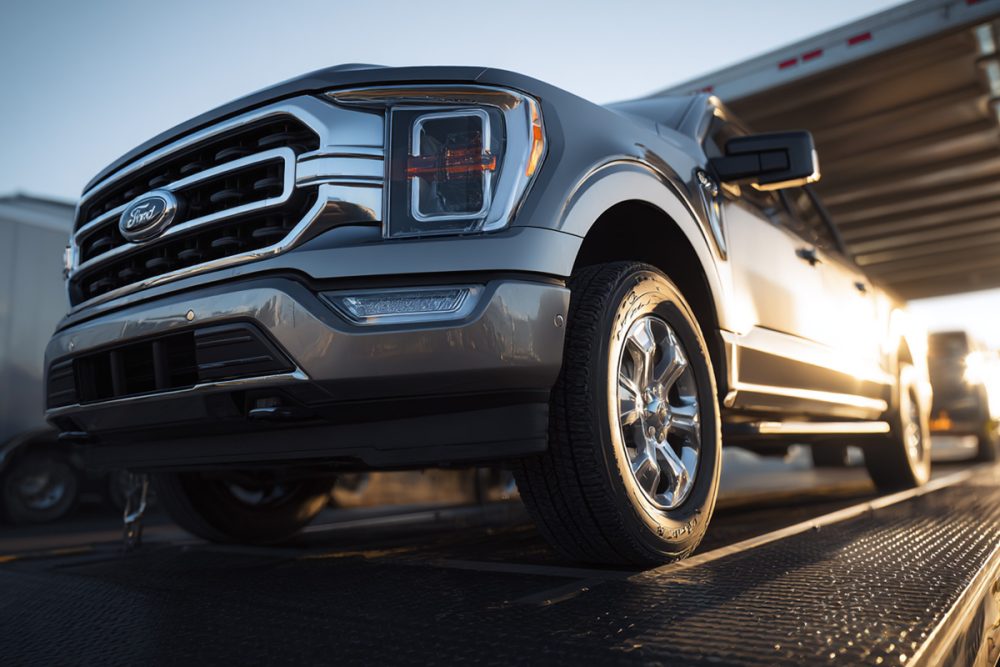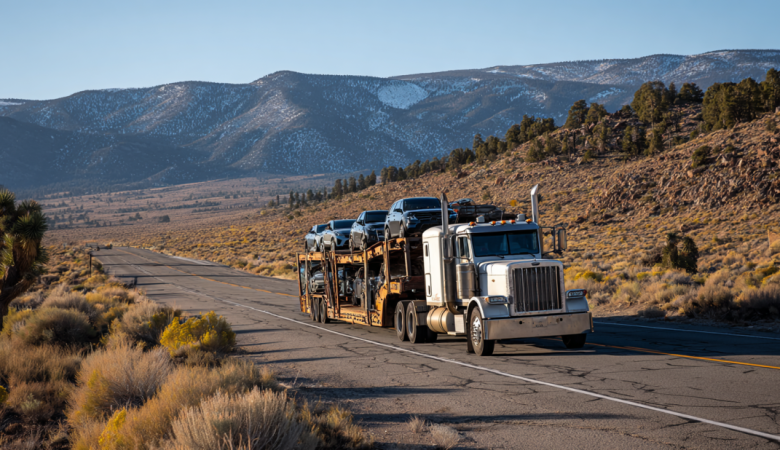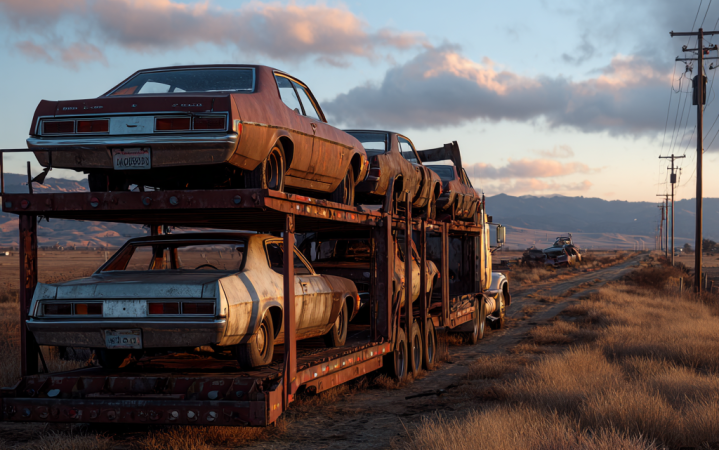Whether you’re shipping a single sedan or a fleet of trucks, vehicle safety during loading and unloading is essential. One might be tempted to overlook the finer details, but these moments are where most workplace injuries and transport issues begin. At EasyHaul, we take these processes seriously, so here’s a guide with the best practices to help you stay safe, compliant, and confident when handling your own shipping.
1. The Foundation: Risk Assessment and Preparation
Before touching the vehicle or trailer, always begin with a solid risk assessment. Are there any workplace hazards like oil spills, loose debris, or blind spots? Identifying potential hazards early goes a long way toward preventing accidents.
During workplace safety inspections, be sure all equipment is functioning properly. This includes checking your ramps, winches, safety equipment, and straps. Also, make sure everyone involved is wearing personal protective equipment (PPE) like gloves, high-visibility vests, and steel-toed boots.
2. Understand Load Weight and Distribution
One of the top causes of trailer instability is poor weight distribution. You’ll want to center the heaviest part of the vehicle over the axles and keep the load as low as possible to maintain a low center of gravity. Make sure to respect load weight limitations. Ignoring this can lead to blowouts, loss of control, and even truck rollover prevention failures.
If you’re loading a car on a trailer, double-check that the trailer is rated to carry that specific vehicle. It might sound simple, but overloading is more common than you’d think and can wreck your suspension or worse.
3. Safe Loading Techniques for Any Trailer
Learning how to load a car on a flatbed trailer is a rite of passage for any car enthusiast. First, ensure the trailer is on level ground and the parking brake is engaged. Use wheel chocks to stabilize everything. When driving, go slowly, or alternatively, winch the vehicle up, making sure it stays centered and doesn’t veer.
When loading a car on a dovetail trailer, extra caution is needed because of the slope. Lower vehicles may scrape if the angle is too steep, so always go slow and steady.
Loading a car may also involve mechanical lifting safety. If you’re using hoists or lifts, inspect them beforehand and never exceed their capacity. These tools are helpful but only when used with precision and proper care.
4. Safety Protocols and Securement
Once the car is in position, proper cargo securement is critical. Use tie-down straps rated for the vehicle’s weight. The goal is to make the vehicle feel like it’s part of the trailer. Anything less, and you’re risking cargo movement and damage during transit.
Keep in mind that safe shipment handling doesn’t end with tie-downs; every step – loading, driving, and unloading – should follow your company’s safety procedures. Following the set safety protocols builds muscle memory and minimizes errors.
And don’t forget to check your safety equipment—that includes backup lights, reflectors, and trailer brakes. Trailer safety depends on everything functioning properly before departure.
5. Know the Rules of the Road
Before you hit the highway, make sure you’re following all freight handling regulations. In the United States, different states may have varied rules on hazardous materials, load limits, and securement methods. Checking these beforehand gives you peace of mind and helps with reducing the risk of fines, or worse.
You’ll also want to conduct a thorough cargo inspection. Look for loose straps, fluid leaks, or damaged parts, and address anything that doesn’t seem right.
6. Equipment and Operator Safety
If you’re using equipment like forklifts, remember that forklift safety isn’t just about the machine; it’s about operator safety, too. Only certified individuals should handle these machines. Always inspect forklifts before use and follow safe operation techniques to avoid tipping or collisions.
For heavy vehicles or machinery, apply heavy vehicle safety guidelines. Never rush, especially when dealing with heavy lifting safety concerns.
7. Unloading Done Right
At the destination, reverse the process carefully. Check your work environment and make sure the vehicle hasn’t shifted in transit. Carefully remove the straps and make sure the trailer is stable before unloading.
Unloading requires just as much attention as loading. Following the same safety tips you used earlier ensures a smooth finish. Use ramps that are clean and free of debris, and if you’re unsure about anything, stop and reassess.
8. Ongoing Maintenance and Safety Culture
No guide would be complete without a reminder about vehicle maintenance for safety. A well-maintained trailer and tow vehicle reduce the chance of breakdowns or on-road issues. Also, make sure you inspect brakes, lights, and tires regularly.
Creating a safety-first mindset in your team is how you build long-term resilience. Make freight security and shipping safety core parts of your daily workflow, not just something you think about when something goes wrong.
Final Thoughts
At EasyHaul, we believe ensuring the safety of vehicles during truck loading and unloading isn’t just about meeting safety standards; it’s about giving you peace of mind and protecting what matters. From cargo handling to safe transportation, every step counts.
By sticking to these tips, you’ll build a routine that ensures freight security, avoids unnecessary delays, and keeps your team and equipment safe. Stay alert, be prepared, and always aim for a safe and smooth delivery.






Leave a Reply
You must be logged in to post a comment.